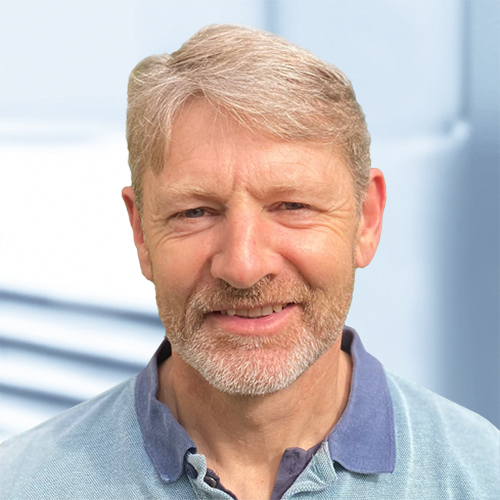How do you ensure that the control system of a new type of electric aircraft works reliably in all phases of flight? At Diehl Aerospace, it must first prove itself in the virtual world.
Urban air mobility (UAM) by air cab enables fast and congestion-free transportation in densely populated areas. The all-electric aircraft with vertical takeoff and landing capability, also known as eVTOL (electric vertical take-off and landing), currently under development for this purpose have promising potential: They are publicly accepted, require little infrastructure, and offer high flexibility for new mobility services. In addition, they contribute to achieving sustainable mobility goals through their emission-free drive.
How much range do you need?
Currently, numerous companies are investigating different approaches to solving the technical challenges of eVTOL aircraft. The planned range of applications plays a decisive role here. Essentially, a distinction is made between intra-city flights with a range of up to 50 km and inter-city flights requiring ranges of 300 km and more. Heinrich Fischer, Head of Software and Validation+Verification Avionics at Diehl Aerospace, is convinced: "The ability to hover like a helicopter while being able to fly at a relatively high cruising speed and range makes eVTOL an effective rapid point-to-point transportation vehicle."
Transformer Transport
One possible technical solution for the propulsion of eVTOL aircraft is adjustable tiltrotors, which, depending on the rotor angle, enable both vertical takeoffs and horizontal flight. This drive concept is particularly suitable for long-distance flights. Another option is multiple conventional, rigidly mounted rotors, as known from quadcopters. Here, the flight speed and direction can be controlled by different speeds of the electrically driven rotors.

No Safe Flight Without Software
The electronic devices that are essential to the operation of modern, electrified aircraft are referred to as avionics. Avionics include the flight control computer (FCC), which incorporates control strategies that operate in response to flight conditions, aircraft configuration, and pilot preference.
Heinrich Fischer explains: "Our flight control computer can fully control eVTOL platforms and supports the pilot to enable safe operations in every phase of flight. During takeoff, landing, and flight, the flight control computer is the link between the pilot and the engines as well as other systems in the aircraft. The system is able to optimally control the rotors for the individual flight phases, regulate their speeds, and, if necessary, detect errors in the system."


High Requirements for Flying High
Safe flying is the central pillar in the development of flight control computers (FCC) – This poses special challenges for the development of these devices. The high-performance computer combines all safety-critical functions of an aircraft. Its reliability is crucial for the safety of the aircraft and its occupants. As required in aviation, the system is redundant, consisting of primary and backup control computers.
Two requirements are of particular importance for verifying the correct functionality of the FCCs at Diehl Aerospace:
- Testing the correct real-time behavior of the flight control computers (FCC)
- Testing all relevant input and output signals and the associated bus protocols
"Real-time tests in particular provide decisive statements as to whether a function is really safe and, in the event of an error, provide conclusions about, for example, inadequate timings, synchronization of signals and bus data, etc.," explains Heinrich Fischer.
To achieve efficient test execution with meaningful conclusions for troubleshooting, Diehl Aerospace placed particular emphasis on the following topics:
- Test automation (TA)
- Reproducible tests with documented results
- Easy creation of tests with available development tools, e.g., Python interface
- Stable test environment that can be kept up to date over many years
Look Closely: Safety Regulations
In the field of aerospace development, a wide variety of standards, safety regulations, and guidelines apply, which Diehl Aerospace must take into account in its development and verification activities. These include, for example:
- ARP4754: System certification
- DO-178: Developing safety-critical software
- DO-254: Developing electronic hardware
- DO-160: Environmental conditions and test procedures for aviation equipment
It is obvious that a test system with such complex requirements must integrate seamlessly into existing development infrastructures. Easy expandability also played an important role in the development. "We were looking for a solution that was scalable and modular as our needs changed," Heinrich Fischer reports.
Testing in Virtual Aircraft
With the goal of finding a test solution for the outlined requirements, Diehl Aerospace carefully evaluated the hardware-in-the-loop (HIL) simulator market and found a suitable system of hardware and software in the dSPACE HIL portfolio, which they were able to seamlessly integrate into their existing test automation environment.
The SCALEXIO HIL simulator virtually replicates the environment for the FCC, allowing it to behave as if it were in an aircraft for which it was designed. The test system is configured to communicate with the multiple interfaces of the flight control computer (FCC) to exchange signals for sensors, actuators, and control.
The HIL simulator is designed to test both the primary and backup control computers. During test operation, the device to be tested can be selected in the test automation.
An identical test system was set up at the system integrator to test the FCC in interaction with other components.

Real-Time Capability Determines Safety
"SCALEXIO allows us to stimulate time-critical input signals in real time, while accurately monitoring the behavior of the FCC using the output signals and, if necessary, integrating other components into the test environment through simulation," Heinrich Fischer reports. He explains the further procedure: "With the simulator, we can also record important signal characteristics in real time and evaluate them graphically. Ultimately, this will allow us to simulate the operational running of the FCC and ensure it is functioning correctly."
Ensure Airworthiness via Simulation
"The SCALEXIO HIL simulator allows us to thoroughly examine our FCC and validate its safety-critical functions," Heinrich Fischer explains. The precise simulation of the controlled systems allows operation that is no different from use in the aircraft. The simulator enables flexible test creation and automated test execution including the creation of test protocols. The test system proves itself in everyday testing through high stability, robustness, and availability. Diehl Aerospace can configure the simulator individually and expand it independently. "The simulator from dSPACE meets our requirements," Heinrich Fischer summarizes. "With it, we succeed in developing and testing our FCC according to the strict guidelines of aviation. The ease of expandability coupled with the wide range of configuration options really impressed us."


Onward Flight Already Booked
The FCC was recently presented at an aviation trade fair and generated a positive response, including from the European aviation authority. This encourages Diehl Aerospace to new development tasks: The deployment of additional avionics equipment, new sensors, and actuators is being prepared, and new software versions are enriching the feature set of future FCCs. Diehl Aerospace is looking forward to using dSPACE's simulator to achieve reliable success in these developments as well.
Courtesy of Diehl Aerospace
dSPACE MAGAZINE, PUBLISHED MAY 2023

Application
- Validation of a flight control computer (FCC) for eVTOL (electric vertical take-off and landing) aircraft

Challenges
- Safety first: ensure the safety of the aircraft and its occupants
- Prove the correct functionality of the FCC and its safety-critical functions
- Adhere to the aviation safety standards

Solution
- Validate the FCC with an airplane which is virtualized using hardware-in-the-loop simulation
- Test time-critical signals under real-time conditions
- Automated, reproducible tests with documented results confirm the functional safety of the FCC

dSPACE Tools Used
- SCALEXIO: Modular extendable real-time computing platform for the simulation of behavior models (controlled systems) and provision of hardware interfaces
- ConfigurationDesk: Configuration of hardware interfaces and implementation of behavior models and I/O function code on SCALEXIO
- ControlDesk: Experiment and instrumentation software to perform and analyze simulations
Created in close collaboration with:

Heinrich Fischer
Head of Software and Validation+Verification Avionics, Diehl Aerospace
About Diehl Aerospace:
Diehl Aerospace is a joint venture between Diehl Aviation and the French company Thales and is one of the leading aerospace suppliers with a wide product range for various aircraft programs.





